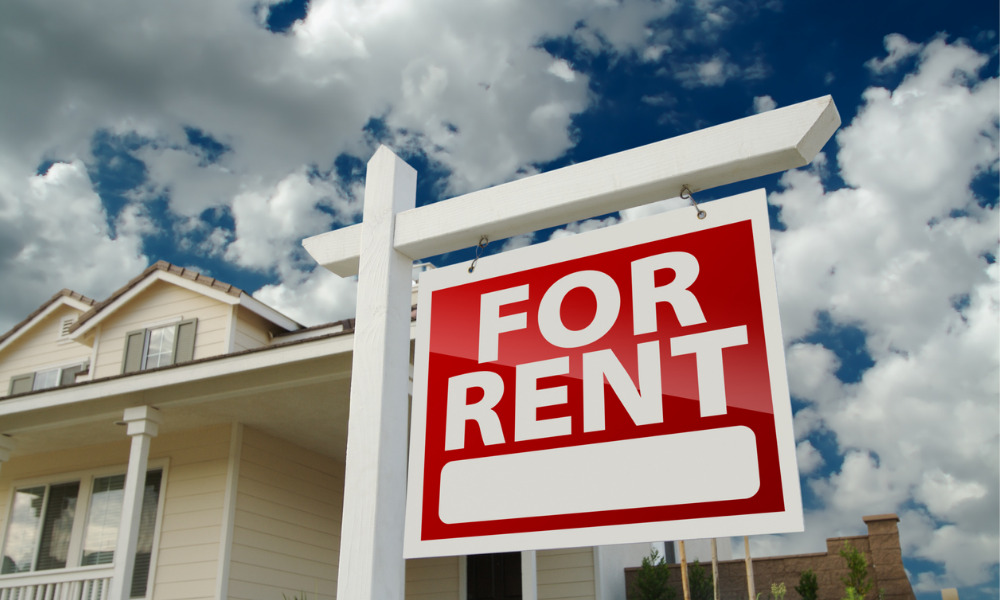Growing mismatch between supply and demand is pushing rents up sharply

Private rental prices paid by tenants in the UK increased by 4.9% in the 12 months to March 2023, according to the Office for National Statistics (ONS).
This rental price growth rate, up from the 4.8% recorded in January, represents the largest annual percentage change since the data series began in January 2016.
Private rental prices paid by tenants in the UK rose by 4.9% in the 12 months to March 2023, up from 4.8% in February 2023.
— Office for National Statistics (ONS) (@ONS) April 19, 2023
➡️ https://t.co/yxcNmICWHa
ONS, in its Index of Private Housing Rental Prices report, said that annual private rental prices increased by 4.6% in England, 4.4% in Wales, and 5.1% in Scotland over the year to March 2023. Within England, the East Midlands saw the highest annual percentage change in private rental prices at 5.1%, while the South East saw the lowest at 4.2%. London’s annual percentage change in private rental prices was 4.8% – the capital’s highest annual rate since December 2012.
Riccardo Tessaro, co-founder and chief executive at Gravity Co, said the growing mismatch between supply and demand is pushing up rents sharply as increasingly desperate would-be renters outbid each other in the race to secure a place to live.
“In many areas, prospective tenants aren’t just grappling with record-breaking rent rises, stiff competition means good homes are being snapped up as soon as they come on the market,” he pointed out. “With many private landlords exiting the market as their buy-to-let sums no longer add up, and many younger people who might have bought a property now priced out of homeownership, there’s more demand for fewer rental properties.
“The only thing which can break the inflationary cycle is a better supply of homes to rent, including more high-quality purpose-built rental accommodation, which provides many people with a place to live.”
Carl Howard, group chief executive at Andrews estate agents, agreed that rocketing demand continues to outweigh the availability of homes to let, resulting in soaring rents.
“Rate hikes and red tape have combined to push some landlords towards the exit door as investment properties feel more trouble than they’re worth,” Howard said. “Many older buy-to-letters nearing retirement are deciding to cash in these nest eggs, and they’re not being replaced.
“Landlords who continue to operate do so in the face of increased costs, squeezed margins, and growing regulatory scrutiny. Meanwhile house sales continue to fall, putting more pressure on the rental sector.”
Howard noted that it has become harder for first-time buyers to scrape together a deposit to buy their own home – with inflation still in double figures – and accidental landlords, often couples with an extra property, are needing to sell to firm up their finances or fund their next move.
“To ease the pressure on tenants, more needs to be done to attract buy-to-let landlords into the market. If not, we’re likely to see rental prices continue to rise over the coming months,” he said.
The Association of Residential Letting Agents (ARLA) stated in its March 2023 Housing Insight Report that the issue of undersupply remains, with no movement seen in the number of properties available to rent.
The Royal Institution of Chartered Surveyors (RICS) also reported in its March 2023 UK Residential Market Survey that strong demand is being seen practically across the whole of the UK. At the same time, new landlord instructions remain in negative territory, as there continue to be fewer new lets available.
ONS, however, pointed out that these supply and demand pressures can take time to feed through to its Index of Private Housing Rental Prices as it reflects price changes for all private rental properties, rather than only newly advertised rental properties.
Any thoughts on this latest report on rental price increase? Tell us by leaving a comment in the discussion box at the bottom of the page.



